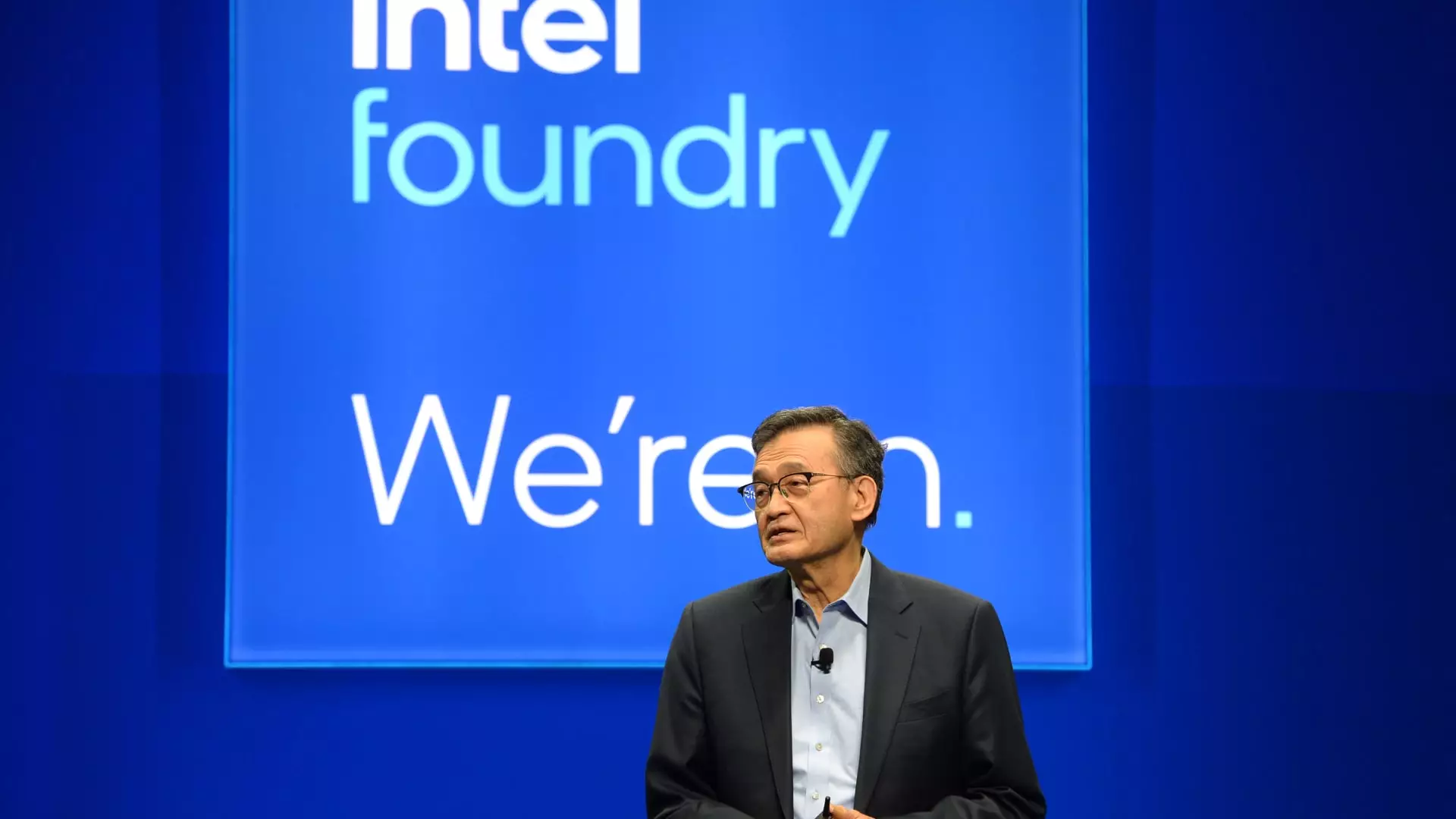The recent 9% plunge in Intel’s stock doesn’t merely reflect market volatility; it signals a deeper crisis of confidence in the company’s strategic direction. While the firm reported better-than-expected earnings—beating revenue estimates and providing optimism for future sales—its stark warning about the potential dismantling of its foundry operations cast a long shadow. Investors are grappling with a sobering realization: despite short-term financial successes, Intel’s long-term viability hinges on navigating an increasingly complex landscape dominated by formidable competitors and uncertain technological partnerships.
This dichotomy highlights the peril of surface-level optimism in the tech sector. Better-than-anticipated earnings can mask fundamental weaknesses, such as the company’s failure to secure external clients for its manufacturing nodes. The CEO’s insistence on “no more blank checks” underscores a brutal acknowledgment: Intel’s past spending binge, fueled by ambitious expansion and heavy investments in new facilities, may have been reckless given the current demand landscape. Wiping out most of 2024’s rally demonstrates that market participants are far from convinced about Intel’s ability to adapt quickly or regain its competitive edge.
Strategic Missteps and the Reality of Market Competition
Despite recent efforts, Intel remains crippled by its inability to penetrate the artificial intelligence market—a sector largely captured by Nvidia. The company’s struggles in this high-growth arena reveal a broader failure to leverage its technological prowess into dominant market share. Instead, Intel’s reliance on a dwindling customer base for its foundry business and its hesitancy to secure new clients paint a picture of stagnation.
The company’s announcement to potentially halt its foundry business—should it fail to attract external customers—transcends mere operational adjustments; it signifies a fundamental reevaluation of Intel’s core manufacturing strategy. It is a declaration that without external demand, Intel’s ambitious manufacturing process innovations like the 14A node might become moot. This pivot indicates a rare admission of vulnerability but also a willingness to gamble on either securing critical partnerships or abandoning a costly, unprofitable pursuit altogether.
Furthermore, layoffs, the slowing of domestic production, and the closure of facilities in Germany and Poland highlight a brutal retraction from previous overexpansion—an acknowledgment that Intel’s aggressive investments may have been misaligned with market realities. These moves reflect a pragmatic, albeit painful, attempt to salvage what remains of Intel’s manufacturing footprint.
The Heavier Burden of Leadership and Fiscal Woes
CEO Lip-Bu Tan inherited a tumultuous situation, and his candid acknowledgment that the company has “invested too much, too soon” reveals honest introspection. His leadership faces a daunting task: turning around a company that has not only suffered substantial market share losses but also experienced widening losses—net losses in Q2 ballooned to $2.9 billion from $1.61 billion a year earlier.
The impairment charges, including $800 million tied to obsolete equipment, exemplify the costs of prior strategic misjudgments. Such write-downs aren’t mere accounting footnotes; they are symptomatic of larger issues—overcapacity, underutilized assets, and misaligned market positioning.
Some analysts interpret the decision to scale back foundry ambitions as a “positive step.” However, this cautious stance barely masks ongoing skepticism about Intel’s prospects. The company’s future hinges on its ability to redefine itself amidst fierce competition and technological rapidity that often favors specialized players like Nvidia over generalist giants like Intel.
The Challenges Of Rebuilding Trust and Market Share
With its market share shrinking and its reputation tarnished by years of underperformance, Intel faces an uphill battle. Restoring investor confidence requires not only a clear strategic plan but also demonstrable execution. The company’s narrative now revolves around the painful necessity of retrenchment—cutting costs, slowing down expansion, and focusing on core competencies.
Yet, the crux of Intel’s dilemma is how to pivot effectively without alienating existing clients or alienating potential new partners. The technology sector rewards innovation, speed, and decisive action. Intel’s current approach—with its focus on internal restructuring and reassessment of the foundry business—must be accompanied by aggressive outreach to reassert its technological leadership. Otherwise, it risks falling behind even further in a landscape where rivals are continuously raising the bar.
The company’s situation underscores a fundamental truth: in high-stakes tech industries, strategic clarity and adaptability often outweigh sheer capacity or previous dominance. As Intel trims its facilities and reconsiders its investments, it must confront the uncomfortable reality that survival depends on whether it can transform these setbacks into a catalyst for renewed innovation and market relevance.

